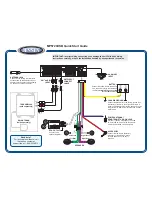
6
Introduction
Signal transmission
The ideal signal transmission of a base station is
shaped like a ring, i.e., so that the registered
handsets can be the same distance away from
the base station in all directions without the
wireless signal being interrupted.
However, the transmission is influenced by var-
ious environmental conditions. For example,
obstacles such as walls or metal doors can
impede the wireless signals or interfere with
their even transmission.
You should investigate the actual conditions
that the planned wireless network will be sub-
jected to by measuring the signal transmission
of the measuring base station at appropriate
positions.
Capacity
The capacity of the cells must be large enough to guarantee that the subscribers can be
reached in high-density traffic. A cell is at full capacity when the number of connections
required for each base station is larger than the number of possible connections.
A Gigaset N720 IP PRO can manage eight connections simultaneously when operated in
narrowband mode (
£
). In broadband mode, four simulta-
neous connections are possible (
,
There are two options for increasing the capacity:
u
Reducing the distance between the base stations.
This means that the cells overlap more, giving
the subscriber access to the base stations of
the neighbouring cells. This results in a more
even wireless quality. However, this can result
in considerable installation costs for an exist-
ing system.
u
Installing parallel base stations.
The cell size remains generally constant but
the number of possible connections increases.
Installing the base stations close to one
another means that the additional assembly
costs are low, but a minimum distance must be
observed between the base stations (
£
Tech-
nical conditions
,
To keep the costs for the devices and for the
installation and maintenance low, as few base stations as possible should be installed.
VoIPon www.voipon.co.uk [email protected] Tel: +44 (0)1245 808195 Fax: +44 (0)1245 808299









































